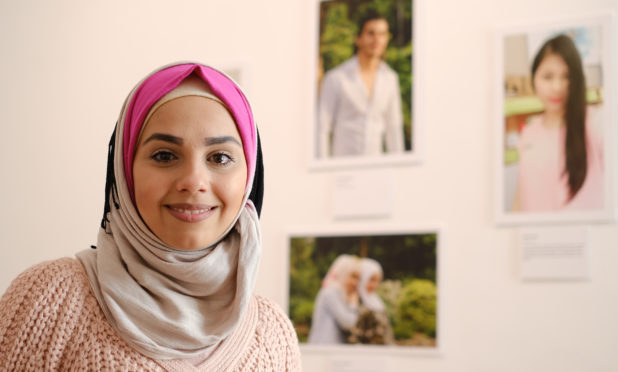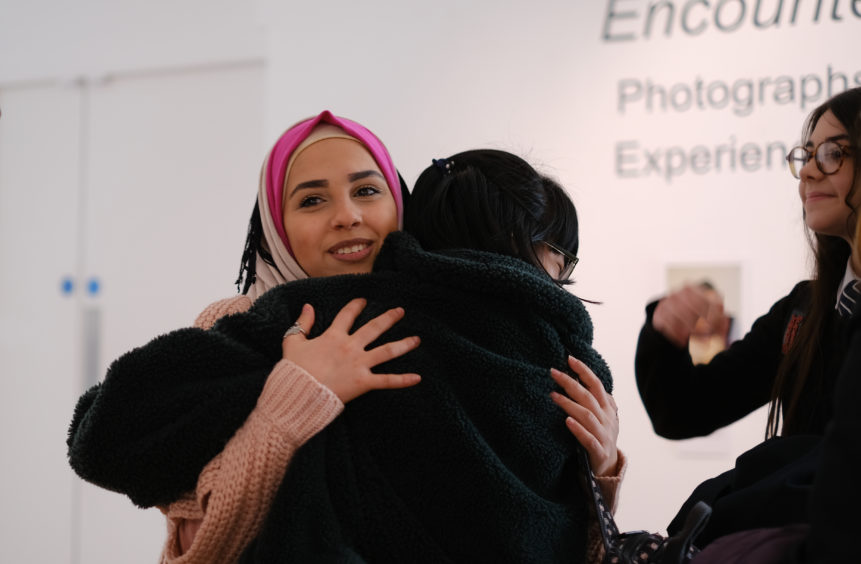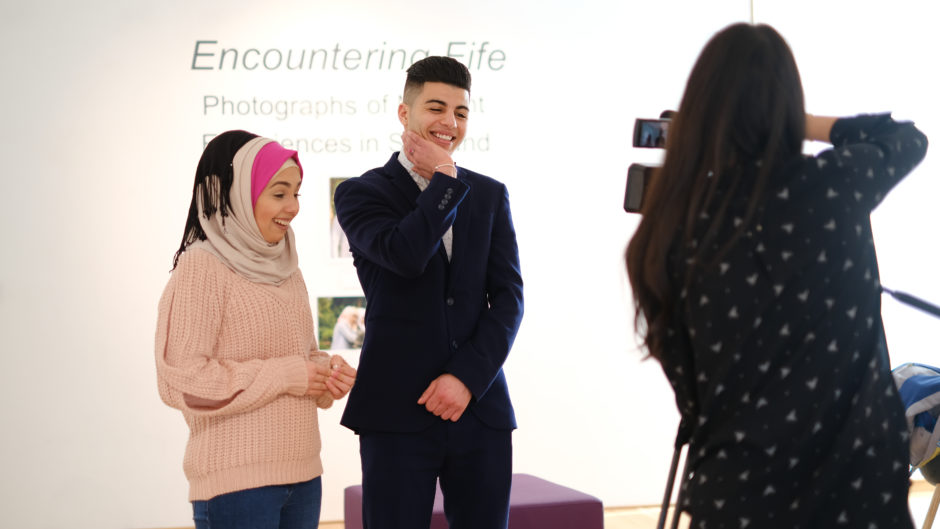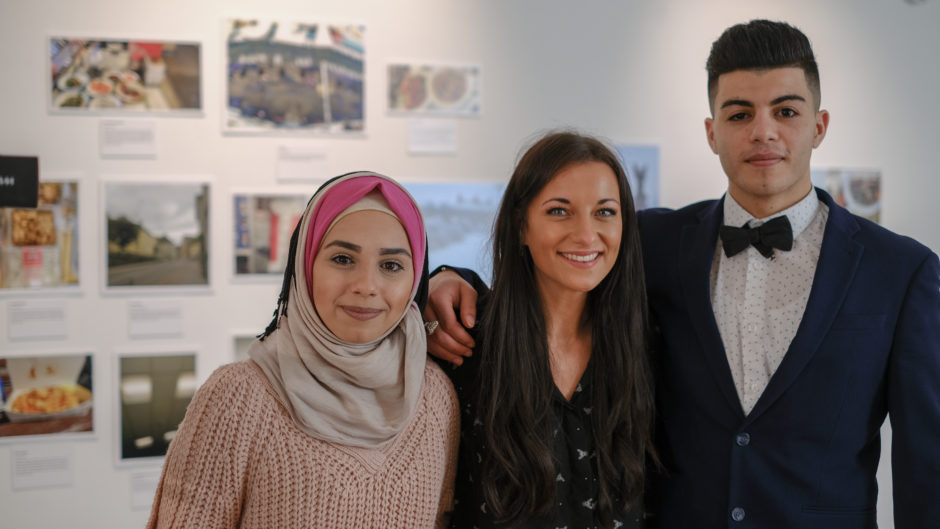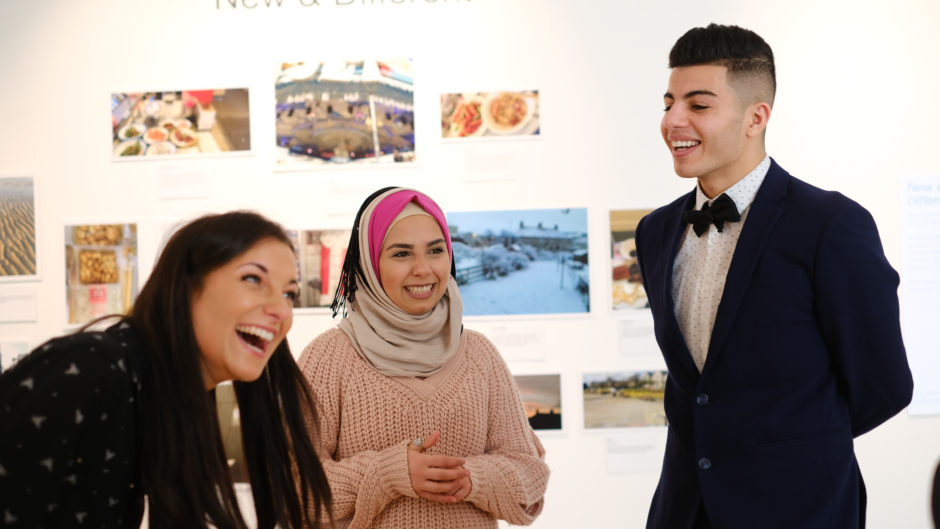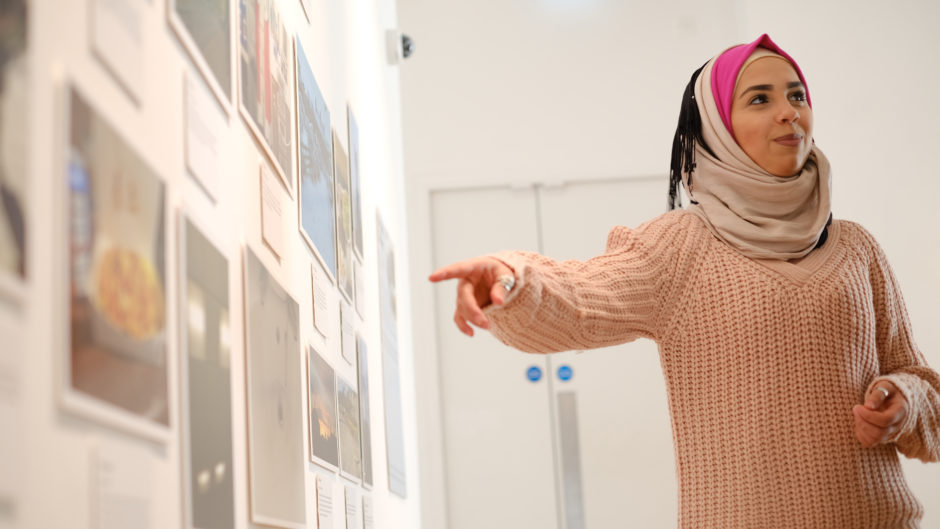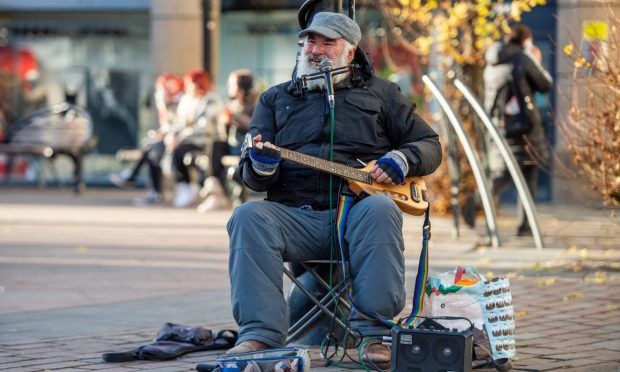A unique exhibition, bringing diverse cultures together, offers a glimpse into what it’s like to move to Fife from very different parts of the world. By Caroline Lindsay
Seeing your homeland through the eyes of a newcomer is always fascinating and a unique project run by St Andrews University Museums has resulted in an exhibition which reveals just what it’s like to move to Fife from another, very different, culture.
Encountering Fife, currently on display at Dunfermline Library & Galleries, saw recently arrived migrants in Fife studying English for Speakers of Other Languages (ESOL) with Fife Council, with pupils from Madras College. They’ve worked together to create a photography exhibition documenting what it’s like to move to Scotland from another country and almost every aspect of the exhibition has been done by them: the migrants took the photographs and then worked closely with the Madras pupils to decide the themes, write the labels and arrange everything else.
Matt Sheard, the curator of the exhibition, explains: “We came up with the idea after seeing research that indicated that 55% of UK citizens feel poorly informed about immigration, and another piece of research that indicated that understanding migrant experiences, creating opportunities for migrants to get to know locals and supporting language learning are key to successful integration.”
The idea behind the project was to team up native English speakers with migrants to give them an opportunity to get to know each other, to use and develop their English in a real-world situation and to share stories.
“We hope that by enabling the migrants to share their stories it’ll give the public a fair picture of what it’s like to move here and an understanding of how to support new arrivals in their communities,” says Matt.
“This sharing of stories is done partly through the photographs in the exhibition, but also through the discussions the migrants had with the pupils as they worked together to prepare the labels for the photographs.
“Those pupils will take that knowledge into their own communities and hopefully help to build a bit of social cohesion,” he continues.
How did you find the six new arrivals, what are their names and what brought them to Fife?
The group all study English for Speakers of Other Languages with Fife Council. That department recruited the participants and have been an important and very supportive partner throughout the project.
With four participants from Syria – Marwa, Rayan, Feras and Mahmoud – all here because of the civil war in their home country, the other migrants taking part include Naila from Pakistan, Fidan from Turkey and Quyen from Vietnam.
“They have some very positive views on life here,” says Matt.
“They all talk about how friendly and helpful people in Fife are. The weather, obviously, is different, but not in a bad way. Naila likes that it’s colder here than in Pakistan, which surprised me. She said that it allows plants and flowers to grow that she doesn’t see in her home country.
“Feras liked the way the sand on the beach looks and someone else noticed how low the clouds are in the sky. Quyen focused exclusively on the different foods she finds here and how she likes to create fusions of Scottish food with her own Vietnamese cuisine. Someone else took a picture of fish, chips and Irn Bru.”
Other things were more sobering.
“Marwa focused a lot on the nature she finds in Fife because, in her words, ‘in Syria nature is being destroyed by violence and bombing campaigns.’ Rayan pointed her camera at the things we have here that they don’t have in Syria, everyday things we take for granted like electric light.
“One of her photographs very simply shows a sink with both taps running because water seems so abundant to her, whereas in Syria there is little or no water, or if they do have it it’s often too dirty to drink.
“That’s been quite eye-opening,” Matt says.
The Madras College pupils also benefited from the project, gaining employability skills including project management, negotiation, writing clearly for the public, communication skills and creating budgets.
“We hope visitors to the exhibition will see the migrants’ side of things, that they’ll get a more balanced picture, see the things those arriving here really like about Scotland, the side of life they find funny, the fact that they’re actually really grateful to be here,” he says.
“Hopefully they’ll also see the human side of migration, get an insight into the struggles they face and gain an understanding of how we can support migrants settle in to their new communities.
“Ultimately, we want to contribute towards a more cohesive society.”
Encountering Fife – Photographs of Migrant Experiences in Scotland runs until April 14. Free admission.
